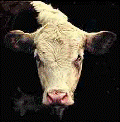Animal Science, Department of

Department of Animal Science: Dissertations, Theses, and Student Research
First Advisor
Paul J. Kononoff
Date of this Version
7-2020
Document Type
Thesis
Abstract
Improving the digestibility of fiber and our understanding of how to feed it will optimize the ruminants’ niche in our society, which is to convert human inedible products to high quality protein in the form of meat and milk. Neutral detergent fiber (NDF) digestibility has been studied and modeled for decades, but it is increasingly important as livestock production is scrutinized for resource use and sustainability. Increasing the amount of NDF fed and improving models of NDF digestibility will improve sustainability by increasing the precision at which we feed livestock which results in less nutrient and greenhouse gas (GHG) emissions. Profitability for farmers will also improve because feeds with greater NDF concentrations are generally cheaper than those with fat, starch, or other energy dense nutrients.
We evaluated how in vitro estimates of NDF digestibility (IVNDFD) affected animal performance predictions from ration software. Forages and fibrous byproducts from 8 energy balance studies were evaluated for IVNDFD, and the IVNDFD estimates were used in place of feed library NDF digestibility (NDFD) values from the Cornell Net Carbohydrate and Protein System (CNCPS) to evaluate if using IVNDFD of feeds improved ration formulation predictions of milk and CH4 production. The CNCPS predictions demonstrated that using IVNDFD improved predictions of CH4 production, but not of milk production. Our results suggest that using IVNDFD may aid in predicting CH4 production which is of increasing importance as GHG emissions from livestock are scrutinized, but that other strategies, like estimating the indigestible NDF (iNDF) fraction of feeds, should be explored as a way of improving model predictions of milk production.
A second experiment evaluated feeding NDF from different sources and processing methods as techniques to optimize NDFD. Seven rumen cannulated Jersey cows were fed in a crossover design with a 2 × 2 factorial treatment arrangement; the factors were forage concentration and DDGS form. Treatment combinations were low forage with meal DDGS (LF-mDDGS), low forage with pelleted DDGS (LF-pDDGS), high forage with meal DDGS (HF-mDDGS) and high forage with pelleted DDGS (HF-pDDGS). Increasing forage concentration slowed rumen passage rate, increased rumen pH and increased rumen NH3, but did not change NDF digestibility or energy corrected milk yield, as we hypothesized. Interestingly, pelleting DDGS appeared to increase the NDF and energy digestibility of the rations, which mirrored results from in vitro evaluations of meal and pelleted DDGS. Further investigation of the effects pelleting has on fibrous feeds is warranted because it may be an effective procedure to improve the feeding value of DDGS or other fibrous feeds by improving their NDFD.
Advisor: Paul J. Kononoff


Comments
A THESIS Presented to the Faculty of The Graduate College at the University of Nebraska In Partial Fulfillment of Requirements For the Degree of Master of Science, Major: Animal Science, Under the Supervision of Professor Paul J. Kononoff. Lincoln, Nebraska: July, 2020
Copyright 2020 Kirby Craig Krogstad